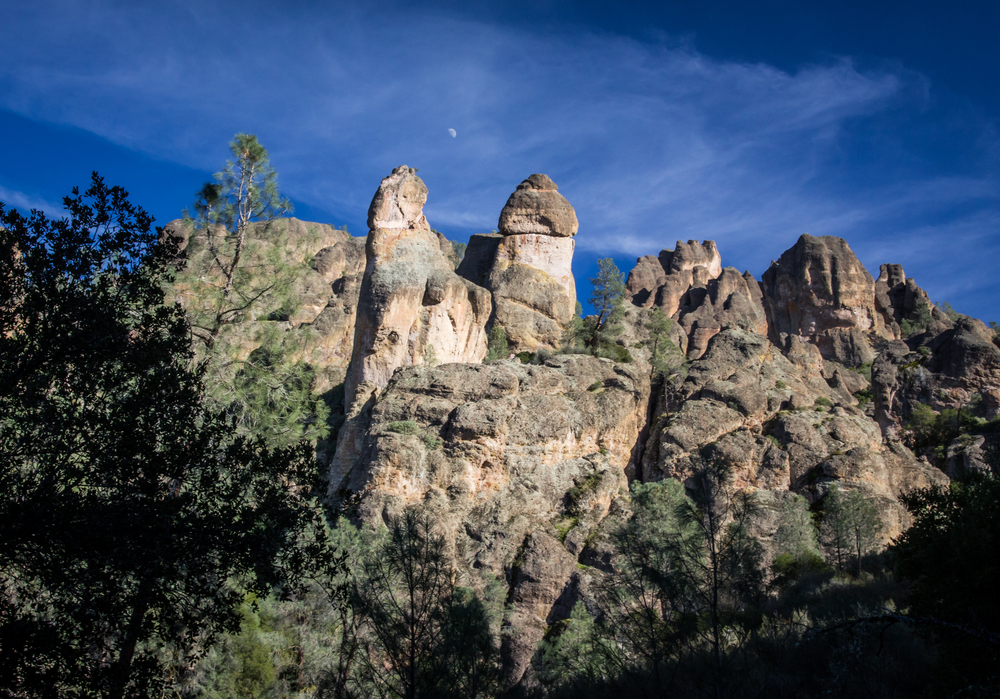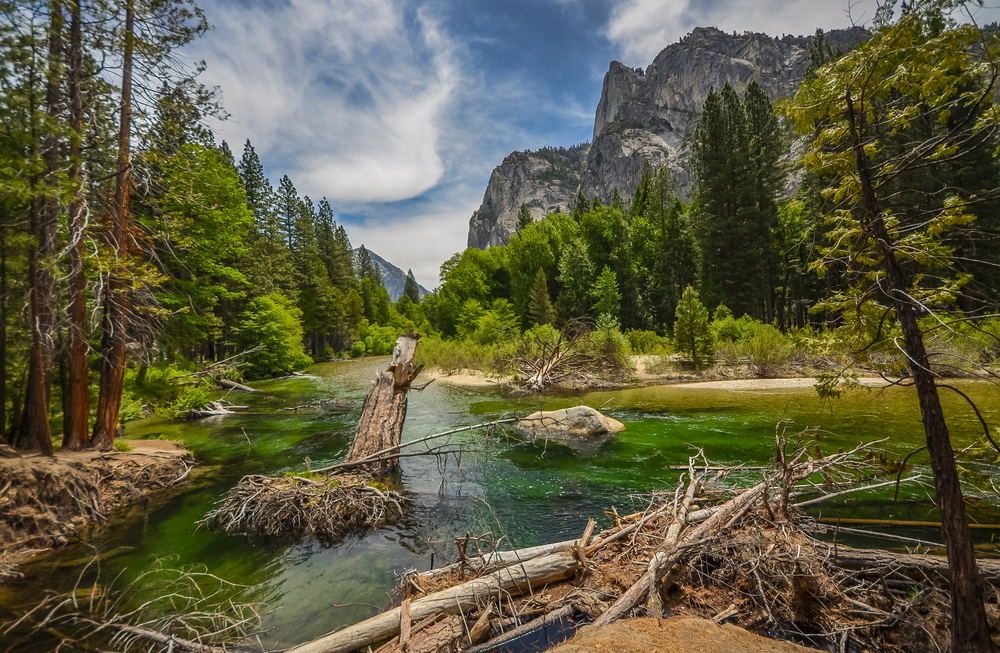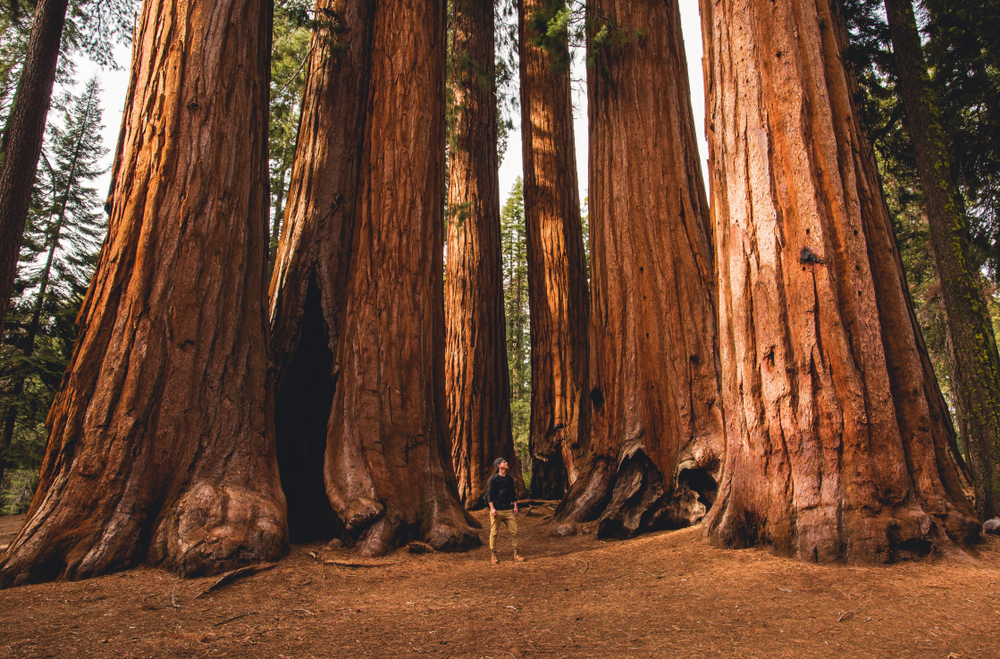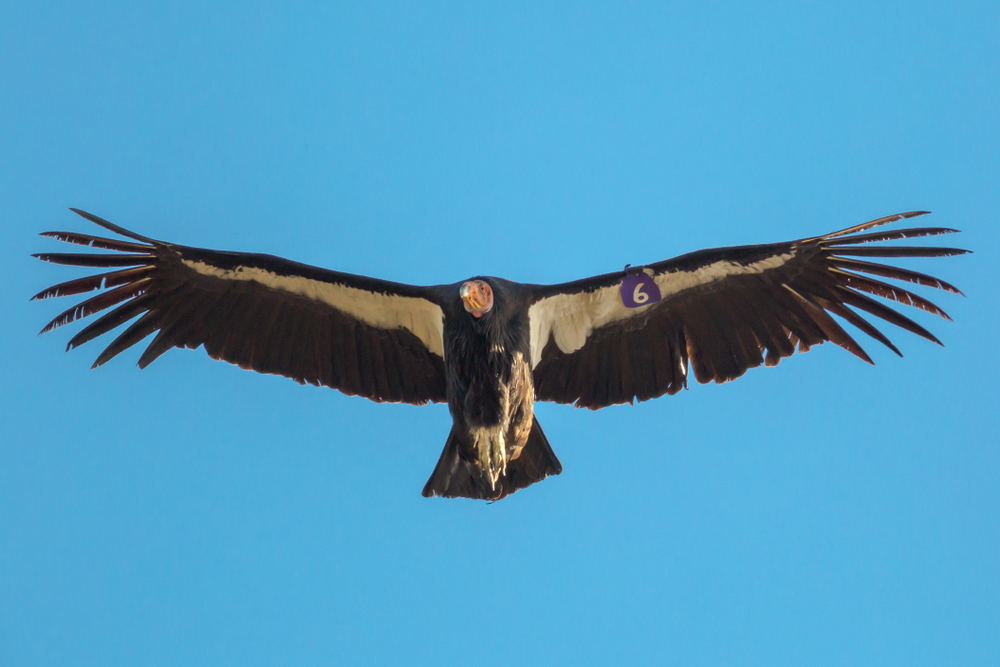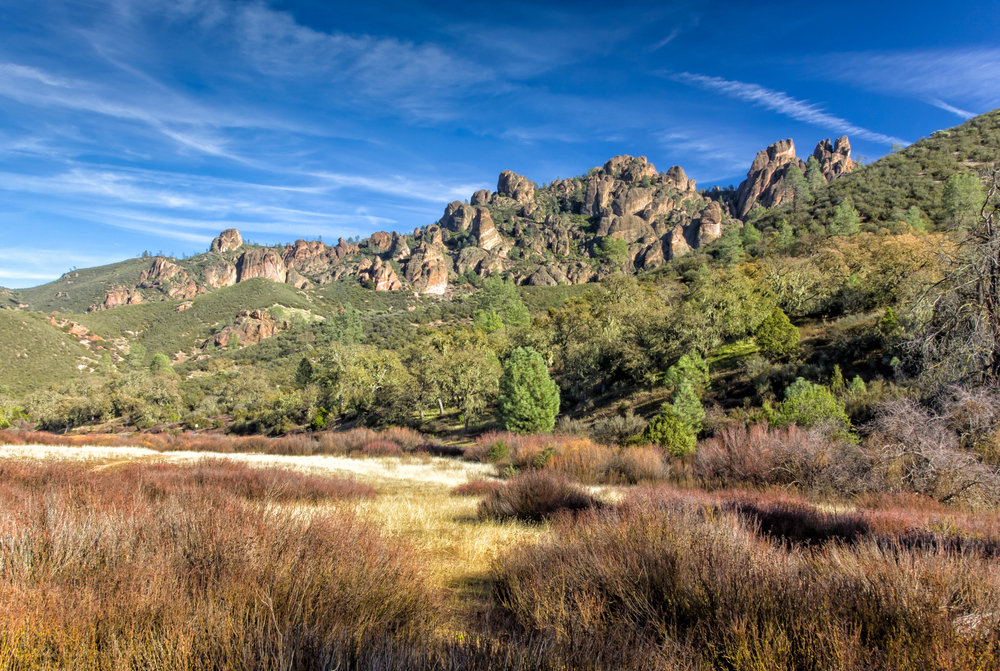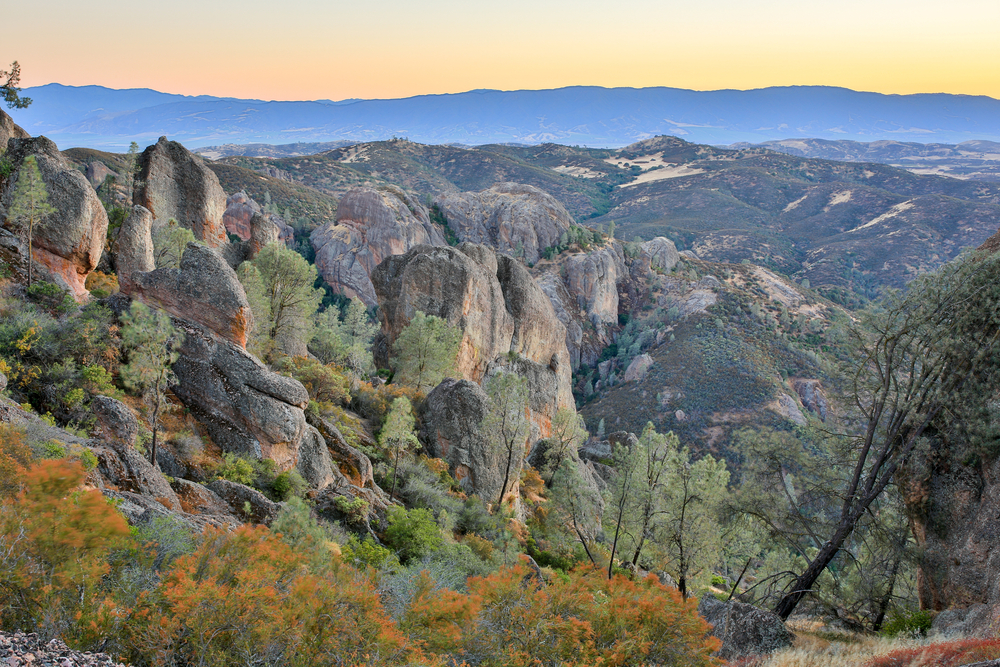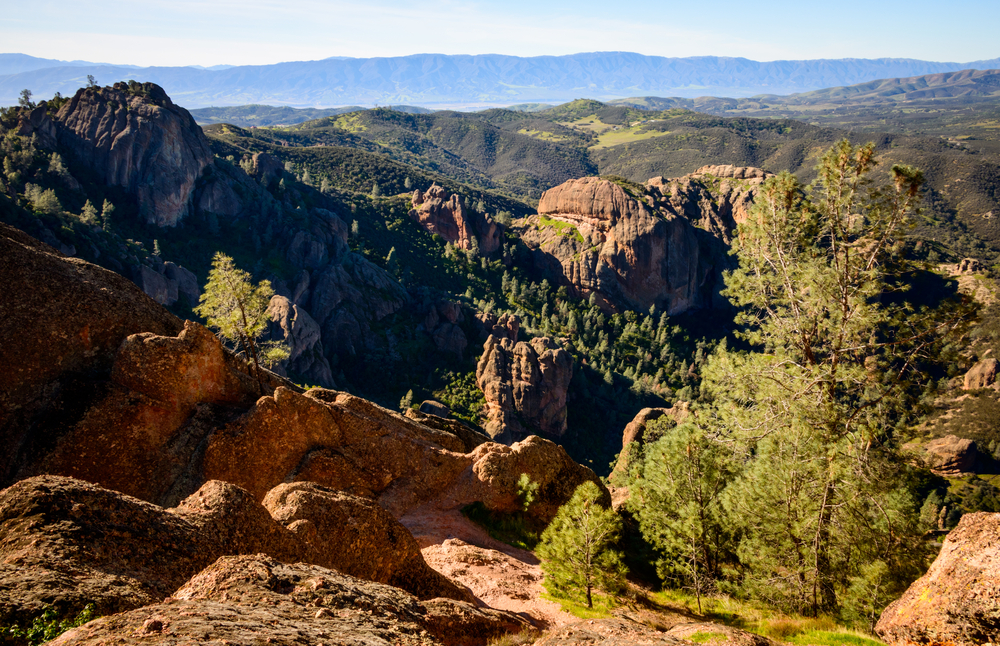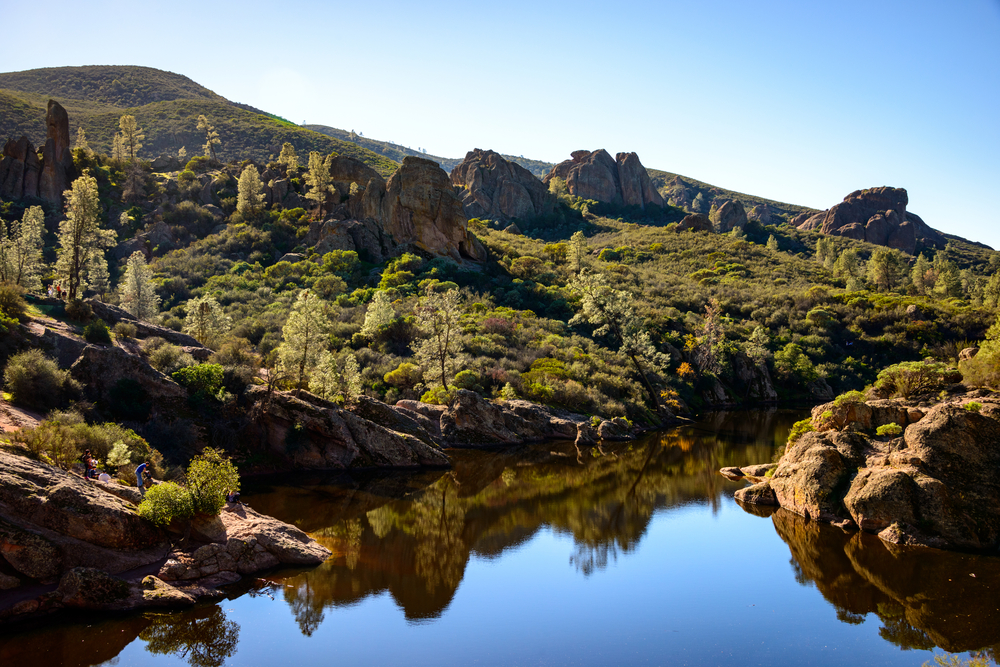Popular
Pinnacles National Park, known for its striking rock formations and unique cave systems, serves as a sanctuary for diverse wildlife, each species contributing to the rich biodiversity and ecological balance of this dynamic California landscape, offering visitors an opportunity to witness the adaptability of nature amidst the park’s rugged beauty.
California Condor Once on the brink of extinction, the majestic California Condor now soars above Pinnacles, a testament to successful conservation efforts within the park.
Prairie Falcon The agile Prairie Falcon patrols the sky, a master of the air, hunting for small mammals and birds across the park’s open landscapes.
Townsend’s Big-eared Bat Roosting in the park’s caves, the Townsend’s Big-eared Bat is crucial for pest control, its large, distinctive ears making it easily recognizable.
Coyote The adaptable Coyote is often seen or heard within Pinnacles, embodying the wild spirit of the American wilderness and playing a key role as a predator.
Bobcat The elusive Bobcat, with its bobbed tail and spotted coat, navigates the park’s terrain in solitude, a silent hunter of the chaparral.
Western Bluebird Brightening the landscape with their vivid colors, Western Bluebirds can be spotted perching or darting across the park’s fields and woodlands.
American Kestrel The colorful American Kestrel, North America’s smallest falcon, is a common sight, hovering in search of insects and small prey amidst the park’s meadows.
California Quail The state bird, California Quail, is easily spotted by its distinctive plume and loud call, a charming presence among the park’s underbrush.
Black-tailed Deer Grazing in the meadows and woodlands, Black-tailed Deer are a serene sight, adapting to the park’s diverse habitats from valley floors to mountain slopes.
Brush Rabbit The shy Brush Rabbit finds sanctuary in the park’s dense vegetation, a small but important part of the local food web, foraging at dusk and dawn.
Pinnacles National Park’s wildlife, from the soaring California Condor to the diminutive Brush Rabbit, reflects the park’s role as a crucial habitat for species navigating the challenges of survival in central California’s varied landscapes, inviting visitors to discover the wonders of its natural community.








































































